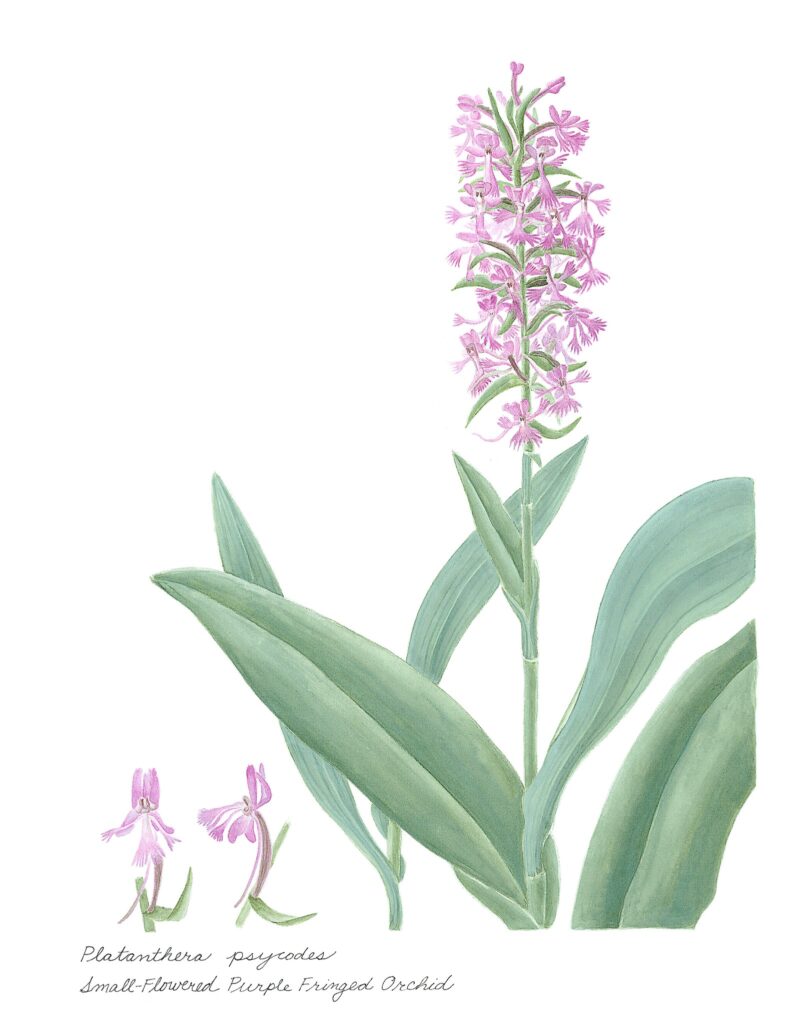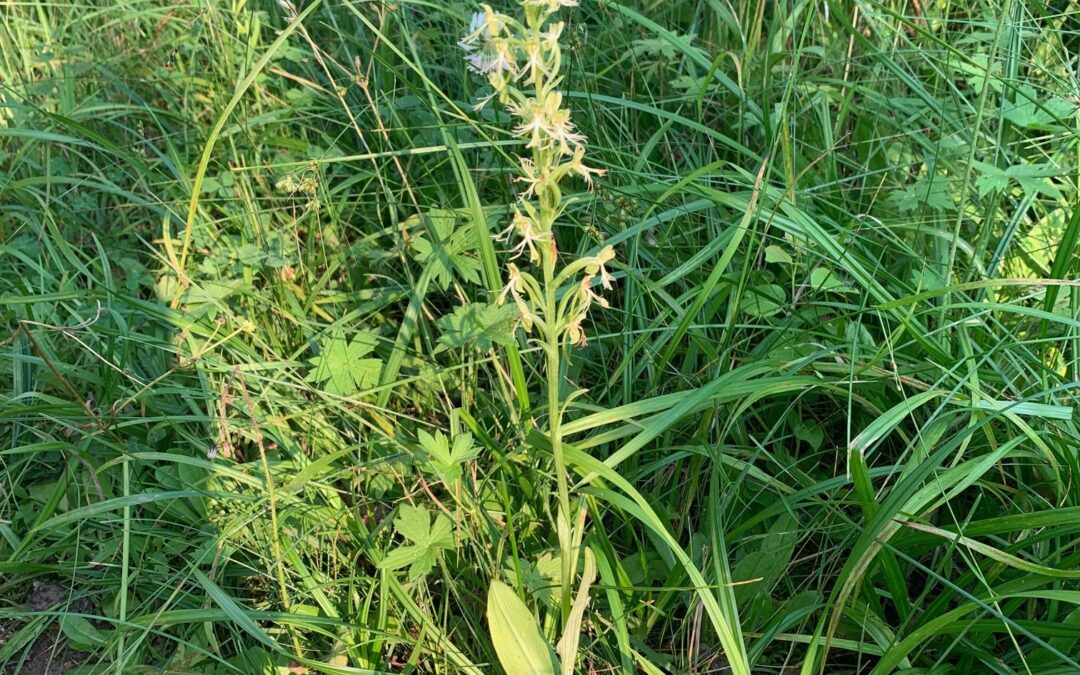Two days ago I was walking with my golden doodle along a woodland trail we use every day, and much to my delight a little white fringed orchid (Platanthera lacera) had popped up. I was amazed that I had not seen it the day before. It was suddenly there next to my path.
About the same time 2 little pink fringed orchids (Platanthera psycodes) appeared in the weeds next to my driveway. This year the patch was full of tall grasses but last year it had been mowed. It is easy to miss this little orchid. Most people don’t look closely, and at a distance it has the look of a purple lupine (Lupinus polyphyllus) or a pink fireweed (Chamaenerion angustifolium).
These wild orchids are a mystery to me, because they don’t announce their place in the world. By that I mean, they seem to appear in a different place every year. At one time I had a purple fringed orchid bloom for three years in a row in the same place behind the barn. But I have not seen it since.
The orchids we find in the flower stores and sometimes even in the grocery stores usually hang from the branches of tropical trees when they are not in a greenhouse. Their roots catch water and nutrients that are in the air. Often it is rain, but sometimes it is air with high water content. Humidity we would call it.

Our northern orchids are called “terrestrial orchids” because they have roots in the ground. Lady slippers are also orchids, which seem to come up predictably in the same place every year. They are popular, because they are easy to see, and much showier than most other terrestrial orchids.
Native terrestrial orchids are very difficult to transplant. People often dig up wild orchids and move them to their gardens, but rarely have any success. There are multiple variables such as the amount of sunlight, the time of day that the sun shines in a specific spot, the soil pH, the fungal rhizomes in the soil, competition from other plants, winter temperature, soil moisture and probably lots of other factors I don’t understand.
These flowers are dependent on pollinators that are quite small. Sometimes orchids are even self-pollinating. These little orchids are not showy. They are quite difficult to find with all the other leaves nearby. And then they are gone for the year.
What is an orchid? It is one of the largest families of plants. They are found around the world and in both dry places and wet places. The little pogonia orchid we discussed a few weeks ago actually grows on the wet bog mat next to Lake Superior.
Look carefully in areas with mottled sunlight and no dense weed cover. Thick grasses inhibit the growth of orchids. Sometimes the pink fringed orchids grow along the edge of a country road. Perhaps you will find one.


